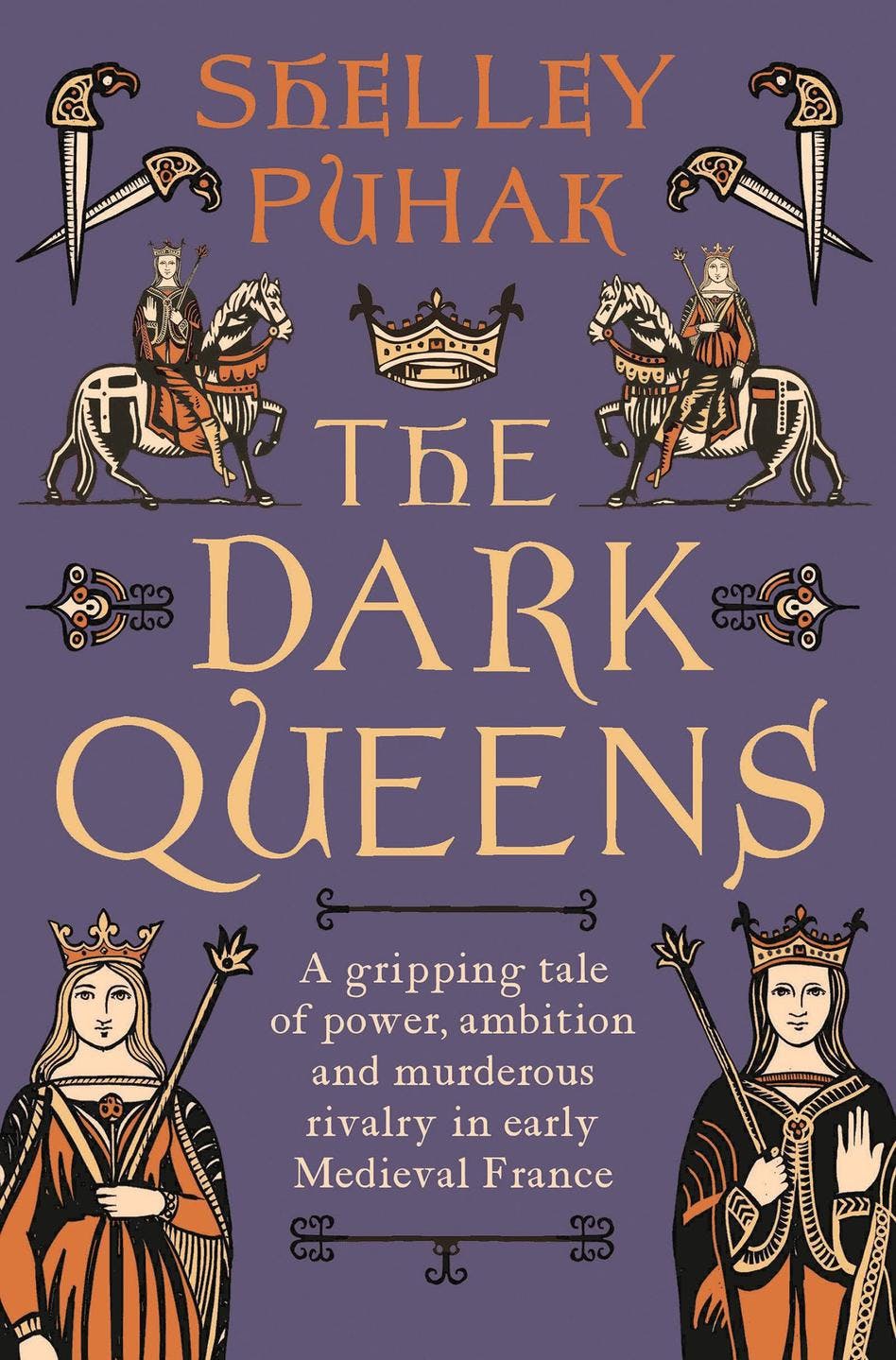This article is taken from the June 2022 issue of The Critic. To get the full magazine why not subscribe? Right now we’re offering five issues for just £10.
Medieval Christendom was filled with powerful women. A few governed realms in their own right, and many others ruled as regents for an underage son or a husband on campaign. They secured international alliances by arranging their children’s marriages. When their families went to war, they raised armies.
Puhak’s achievement is to awaken characters of a distant age: Fredegund and Brunhild
Even day-to-day, queens shaped the world around them. They manoeuvred at court by exercising patronage and advising their husbands or sons. They supported building projects and patronised abbeys. They corresponded with rulers across Christendom, presenting their interests largely in their own words. Some even commissioned or authored histories to shape the narrative of their family’s rule.
Meanwhile, their sexuality played a central part in politics. Queens were expected to bear (male) children. Those who failed could be cast aside, though the papacy tightened marriage laws in the thirteenth century. The legitimacy of heirs was essential, so accusations of adultery were poisonous. Queens were uniquely powerful and uniquely vulnerable.

(Head of Zeus, £25)
The careers of these influential women often intersected. Sometimes they fought over kingdoms — Queen Matilda versus Empress Matilda in the “anarchy” of twelfth-century England for example. But more often they co-operated, because this is what the system of international marriage alliances was designed to encourage.
Shelley Puhak, in her non-fiction debut, focuses on the “murderous rivalry” of two sixth-century queens, Fredegund and Brunhild. By choice of subject and explicit reference, Puhak evokes the woman-versus-woman lethal drama of Game of Thrones. It makes for an exciting story, but it is worth recognising that Fredegund and Brunhild stood in a panoply of powerful medieval women, who drew from a menu of political means and often worked together. Otherwise we risk letting the GoT paradigm — in which commanding women must be vicious and at each other’s throats — distort our view of (historical) female rule.
Puhak’s achievement is to awaken characters of a distant age. Fredegund and Brunhild lived in the shadowy world of sixth-century Merovingia, the conglomeration of kingdoms in what is now France, the Low Countries and part of Germany. Amid crumbling Roman splendour, the Merovingians played out their political machinations. Fredegund was a palace slave who elbowed her way to the throne. The mistress of Chilperic I of Neustria, she engineered his separation from his first wife, and probably the murder of his second, Galswintha.
It was this murder that lit a life-long enmity with Brunhild. This Visigothic princess, who married Sigibert I of Austrasia, was Galswintha’s sister. When Sigibert was assassinated, apparently on Fredegund’s orders, the two queens propelled themselves into plot and counterplot to secure their family’s advancement at the other’s expense. The favoured weapon was assassination: The Dark Queens racks up a body count to rival a mob drama.
The lives of female leaders of the era are often frustratingly beyond our reach
Other strategies are revealed through Puhak’s minor characters. Radegund was enslaved in war as a child by Clothar I and made to marry him, but abandoned her marriage for a life of chastity, founding a religious community in Poitiers. Protected and empowered by her status as a holy woman, she wielded significant political influence.
The lives of female leaders of the era are often frustratingly beyond our reach. Fortunately, Fredegund, Brunhild and Radegund are described by Gregory, Bishop of Tours and the greatest chronicler of the age. As a political player, Gregory knew his subjects personally, and weaved their careers into his History of the Franks.
As illuminating as Gregory’s History is, its dominance means we often see these queens only through his eyes. Puhak counteracts this by reading Gregory’s portrayal against the grain, and drawing where possible from the poet Venantius Fortunatus. She also uses archaeological evidence to paint their physical world, and gilds their stories with imagined scenes.
Ultimately, Puhak puts the “dark” in Dark Queens by conveying the precariousness of their lives with an empathy that makes the story all the more unsettling. By the final chapters, I wanted to applaud Fredegund and Brunhild just for surviving to a reasonable age, though there was to be no happy ending. While Fredegund died (probably) of natural causes, Brunhild was delivered to Fredegund’s son, Clothar II. She was tied to horses and pulled to pieces.
These are stories that deserve to be more widely known. Brava to Shelley Puhak for bringing Fredegund and Brunhild out of the darkness.




















![[Book Review] The Blade Itself (The First Law Trilogy) by Joe Abercrombie](https://bendthekneegot.com/wp-content/uploads/2018/01/1516047103_maxresdefault-218x150.jpg)


















